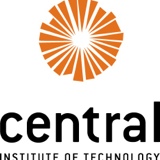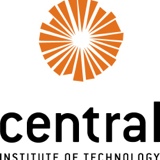Information
-
Quality Assurance for BB course...
-
Conducted on
-
First audit for this course.
-
Last audit details.
Portfolio
-
Applied Design
-
Art
-
Build, Design & Construction
-
Comm & Child Services
-
Engineering
-
ESL
-
Finance & Property Services
-
Health
-
Media
-
Science & Resources
-
Sport & Lifestyle
-
Tourism
Prepared by
-
Gail Woods
-
Jyoti Thethy
-
Grazia Cooper
-
Ferguson Roper
-
Jeremy Sorensen
-
Tim Riessen
-
Dee Dudley
-
Other staff present.
Visual design
-
Course uses Central style
-
Overall design of course is consistent with other courses in the same qualification/study area/portfolio. For example, banner graphic, menu item names, folder names, styles and colours are the same where possible.
-
All read-only documents for viewing via Bb (e.g. Learning plan, assessment guide, RPL processes) to be presented in Central-approved document templates and in PDF format
-
Blackboard course maintains the Central approved 'template' for visual design.
-
Colours are used appropriately and consistently and are employed so as to ensure adequate visibility and contrast.<br>(See also accessibility section)
-
Approx. 50% of the screen is white space
-
Background textures or patterns do not interfere with legibility. Page backgrounds must be white or an APPROVED background scheme supplied by e-learning helpdesk.
-
A maximum of two or three fonts is used throughout the course
-
Decorative fonts are only used for headings
-
Body text uses sans serif fonts (e.g. Arial, Helvetica, Verdana)
-
Text content is presented in short paragraphs
-
Body text is left justified
-
Emphasis (bold, italics) is used sparingly and to maximum effect
Instructional Design Standard
-
The course contains clear content descriptions that enable the learner to locate and understand the purpose of the content.
-
The course navigation is intuitive, consistent and does not confuse the learner.
-
Content is presented in a clear, well-structured sequence that makes sense to the learner.
-
There is a clear and contextual learning path through the resources.
-
Learners are provided with an explanation of how the content may relate to face-to-face delivery ( if appropriate)
-
Content is designed for screen reading and/or is available for downloading and printing by the learner.<br>(See also accessibility section)
-
The 'wall of text' has been eliminated. Content is reduced and segmented into small l chunks. Any non- essential information has been removed. Headings and lists are used to organise the content. White space, graphics and video are used to effect.
-
Major headings are clear and descriptive.
-
A maximum of 5-7 bullets per slide.
-
A glossary is used to define key concepts and terms
Assessment
-
Assessments submission instructions are clear relevant, and complete. So that students are certain about how and when they will be assessed,and how submission is to be made.
-
Assessment submission has declaration that this is students own work, using wording from F04B3.
-
A variety of assessment methods are used, including self-marking quizzes and written submissions for assessment by lecturer.
-
Students are given expected timeframe for providing feedback.
-
Assessments are submitted online where possible
Facilitation
-
The course uses an orientation process
Copyright Compliance
-
Copyright compliance requirements are met with all licenses and attributions correctly placed.
-
A copyright register is maintained, copy sighted.
-
Images are all legally owned, or are used according to copyright law.
Technical standards and testing
Video
-
Files are compressed/optimised to minimise storage and bandwidth overheads
-
Video and animation are consistent in quality, size and type
-
Videos are planned and edited where necessary so that they are no more than two to five minutes in duration wherever possible.
-
Use of video is appropriate to the delivery
-
Video is stored and downloaded as appropriate. YouTube videos are streamed.
Audio
-
Wherever possible, audio narration is included with digital resources (video, screen capture tutorials etc)
-
Narration is clear and concise.
-
Volume can be controlled by the user
-
Audio can be paused
Text Content
-
Language used is clear and concise
-
Spelling and grammar are correct
-
Language is culturally neutral.
-
Tone is appropriate for the learners
-
Complex sentences are avoided
-
Text content has been reduced to allow for screen reading
Images
-
Images are meaningful and have a purpose
-
Images are resized and compressed for web
-
Screen captures do not contain any personal information (e.g. the personal contents of the instructor's computer screen)
Accessibility/Usability Standard
-
ALT tags are used on all graphics
-
Text is provided for all non-text elements (e.g. a transcript of video; long description of images)
-
Video files have associated script or dialogue or captions.
-
Colour is NOT used as sole method of conveying content
File and Resource Management Standard
-
As far as possible, the Central-endorsed Content Management System is used for the storage of all learning resources.
-
Video assets are stored in a Central-endorsed system (e.g. Clickview or similar)
-
Any file naming conventions set down by Central are followed
Sign off
-
Database updated
-
When?
-
Signature of QA
-
Lecturer signature
-
Enter date this report signed







